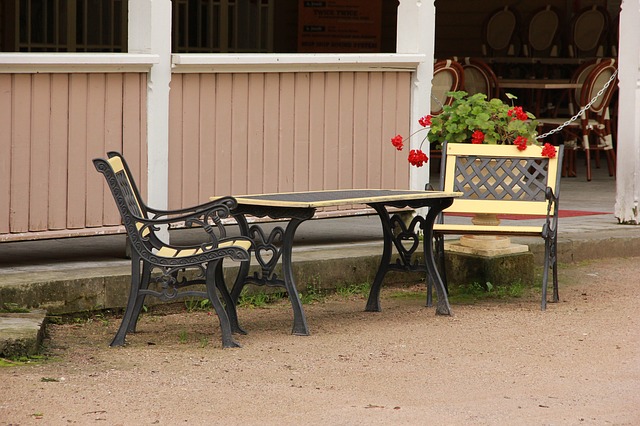Although outdoor and patio furniture may be designed to cope with the elements, it will still need taking of. Here, then, are some tips to follow to help keep your furniture in the best condition; the more care you take maintaining your furniture, the longer it will last.
All outdoor furniture can suffer potential damage from the weather, including sun, rain and wind that can carry abrasive particles. These particles can discolour paint or dull polished metal finishes. Normal usage of the furniture can also potentially damage the furniture, as it is subjected to bumps, scratches and scrapes from people using it. Changes in temperature, from hot to cold and back again, can also cause damage.
Like vehicles, outdoor furniture is subjected to much of the same damage from the weather as both are outside for most or all of the time. All outdoor furniture should be designed for to withstand the elements, paying more to buy better quality furniture can be a good investment. Quality furniture purchased at a higher price should be able to cope with the weather than cheaper furniture can, but it can be worth checking to see what materials that furniture is made from.

Outdoor furniture made from metal, such as wrought iron and stainless steel, is normally treated or painted to protect it. Untreated metal furniture of these types that are subjected to water can suffer from corrosion, damaging it and reducing its life. Aluminium furniture does not suffer from the same problems, although may still be painted for decorative reasons. Aluminium furniture, being light, is more susceptible to damage from the wind, though, as it can blow over or, if the winds are extreme enough, away.
When not in use, such as during the winter months, it can pay to cover even metal furniture to protect it from the weather. The furniture can also be washed or hosed down with soapy water to clean it of any spilt liquids that could damage the protective coating and expose the furniture to damage. Potentially damaging spills should be cleaned away as soon as possible, to reduce the chance of damage. The furniture should, when purchased, come with instructions as to how to wash it – don’t use any cleaning fluids that are not recommended for use on your type of furniture as they could damage it.
Cleaners specifically designed to be used on outdoor furniture can help preserve it better than normal household cleaners, although any normal cleaners that state that they are suitable for use on the materials that your furniture is made from could potentially be used – it can pay to read the labels on any furniture cleaners before buying or using them.
Fabric cushions, that are often used with the furniture to make it more comfortable or decorative, can be more difficult to maintain. Even though the fabrics used are usually treated so that they are suitable for use outdoors, they are rarely completely waterproof. Cushions and similar items should therefore be covered, or stored away, when not in use otherwise they could become mouldy or get mildew.
When your furniture isn’t in use during the winter months, it should either be stored away, in a shed, garage or other building, or properly covered or treated so that it gets through the off season without damage. One of the best ways of saving money when buying outdoor furniture is simply to protect the furniture you do have so that it lasts longer and is better value for money, as well as buying better quality to start with so that the furniture copes with the elements better. Spending slightly more money to begin with can be cheaper in the long run.

Comments
One response to “What You Should and Shouldn’t Do with your Outdoor Furniture”
[…] material your furniture is made from will affect its’ maintenance needs. Wood, which can be hardwood, softwood or composites, is different to plastic which is different to […]